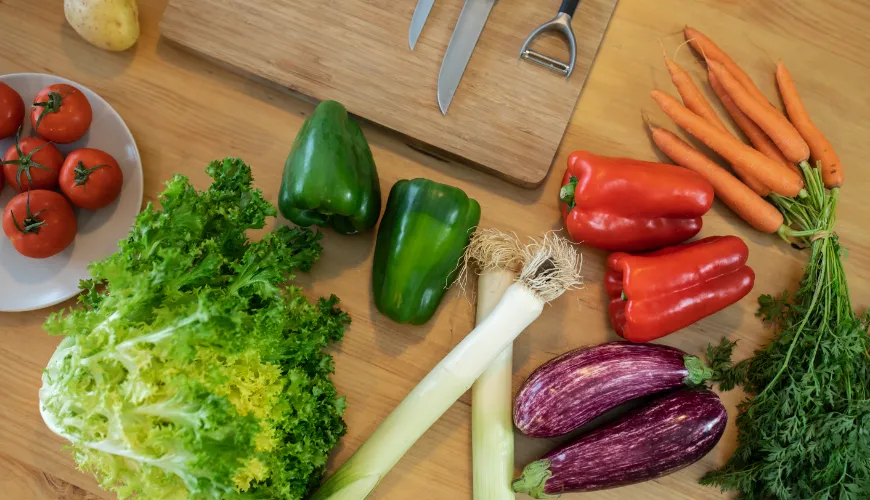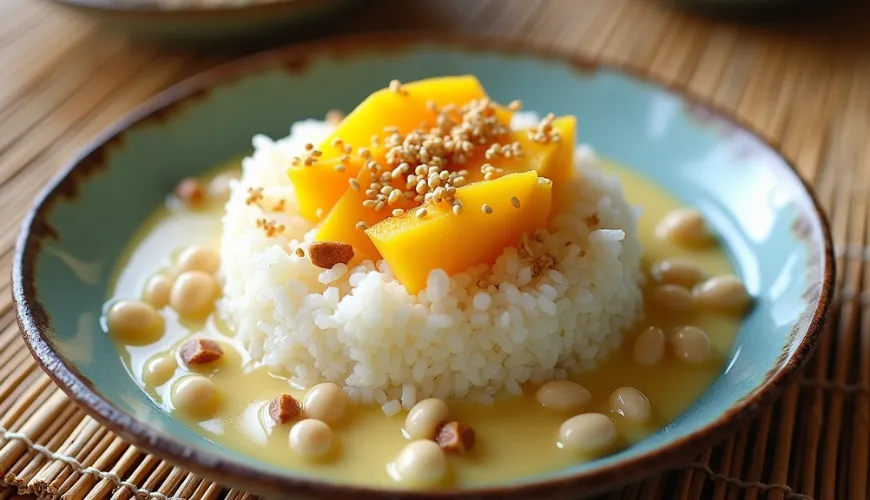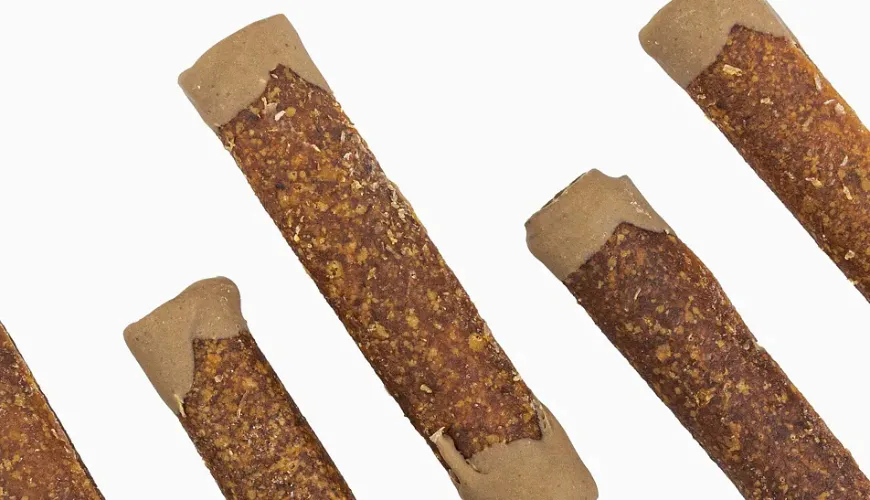
Discover an amazing mango sticky rice recipe and impress your loved ones

Mango Sticky Rice - The Thai Dessert Legend You Can Make at Home
The sweet taste of ripe mango complemented by soft sticky rice with coconut milk. If you've ever visited Thailand, you've probably tried this dessert—and if not, now is the perfect time to remedy that. Mango sticky rice, known in Czech as sticky rice with mango, is not just a treat for tourists but an integral part of Thai cuisine. And what's more—it is surprisingly easy to prepare this dessert at home.
Why Has Mango Sticky Rice Become a Global Favorite?
This traditional Thai dessert, whose name translates to "sticky rice with mango," combines several culinary contrasts. Sweet and creamy coconut sauce mixes with gently salty rice, which, thanks to a special preparation method, has an unusual but excellent texture. And to top it all off, juicy, ripe mango adds a refreshing fruity contrast. The result is a dessert that charms with its simplicity and layered flavors.
In Thailand, "sticky rice with mango" (you may encounter various names like mango sticky rice recipe, sticky mango rice recipe, or mango sticky rice recipe) is commonly available from street vendors, especially during mango season—from April to June. However, interest in this recipe has gradually increased in Western kitchens, where people have come to love its exotic and unique taste.
What You'll Need and How to Make It
Preparing this sweet delicacy may seem complicated, but in reality, you only need a few basic ingredients. The key to perfect results is choosing the right rice and quality coconut milk.
Ingredients:
- 200 g of sticky rice (also known as "sticky rice" or "glutinous rice")
- 400 ml of coconut milk (preferably full-fat)
- 100 g of sugar (preferably cane sugar)
- 1/2 teaspoon of salt
- 2 ripe mangoes (preferably Nam Dok Mai or Ataulfo variety)
- Sesame seeds or mung beans for sprinkling (optional)
Start by rinsing the rice with cold water until the water runs clear—this removes excess starch. Then let it soak ideally overnight, or at least for 4 hours. This step is important because it ensures the rice sticks nicely during cooking while remaining fluffy.
Then steam the rice—in Thailand, it is traditionally cooked in a bamboo steamer, but you can also use a regular steamer inserted into a pot of water. It is important that the rice does not cook in water but only above the steam.
Meanwhile, prepare the coconut sauce: heat coconut milk in a saucepan, add sugar and salt, and stir until everything dissolves. Do not boil, just heat—coconut milk tends to curdle if it reaches too high a temperature.
When the rice is done, pour some of the coconut sauce over it and let it sit for 10–15 minutes to absorb the flavor. Save the rest of the sauce as a topping for later.
Slice the mango into thin slices and serve with the rice and coconut sauce. You can garnish the dessert with sesame seeds or lightly toasted mung beans, which add a pleasant crunch.
A Little Piece of Thailand at Home
One of the advantages of this recipe is its adaptability. If you don't have a traditional variety of mango on hand, you can substitute it with another juicy and sweet type, such as Kent or Keitt. If you can get fresh coconut, you're in luck—but quality canned coconut milk from organic stores like Ferwer can also work wonders.
An interesting enhancement might be the addition of a little pandan juice, which gives the rice a gentle green color and a light vanilla-like scent. Modern variations also include flavors like matcha, rose water, or durian—though the latter is somewhat controversial due to its distinctive aroma.
An example of how unexpectedly versatile this dessert can be is the story of a Czech chef who first tasted the sticky rice mango recipe at a Bangkok night market. He immediately fell in love with the combination of flavors and, upon returning to the Czech Republic, began preparing the dessert in his small café. Today, it is one of the most popular items on the menu—and guests return specifically for this little piece of Thailand.
What Makes Mango Sticky Rice So Special?
At first glance, it is a simple combination of a few ingredients. But that simplicity allows each component to truly shine. Coconut milk is rich and creamy, the rice gently salty, and the mango naturally sweet and refreshing. This contrast not only delights the taste buds but also provides an interesting experience that doesn't get old.
Moreover, from a nutritional standpoint, it might surprise—compared to traditional desserts, it is gluten-free, and if you choose a plant-based sweetener and coconut milk, you can enjoy it even with a vegan or lactose-free diet.
As the Thai saying goes: "Whoever tastes mango with rice has experienced the taste of a full life." Whether as a sweet finish to a meal or as a standalone treat with coffee—the mango sticky rice recipe will find its way into your heart.
Whether you search for it under the name sticky rice mango recipe or sticky mango rice recipe, the result is the same: a breathtaking dessert that is easy to prepare, tastes great, and impresses every guest. So why not brighten your day with a piece of exotica that tastes like a holiday?

